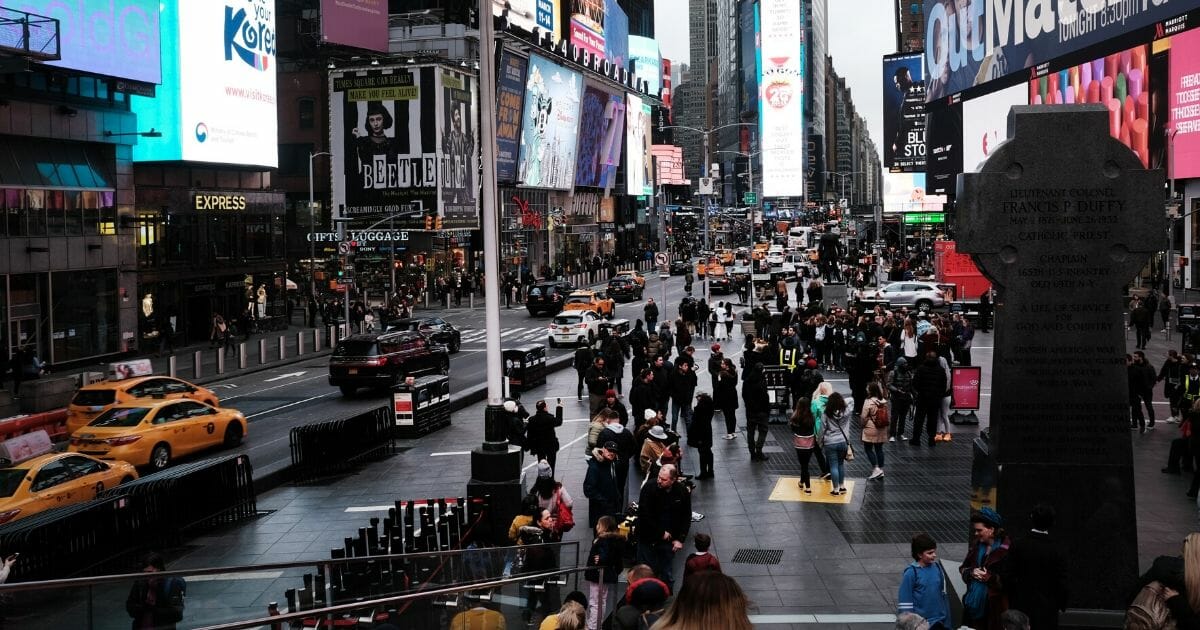
Trump Was Right All Along: Studies Find Most NYC COVID Cases Came from Europe
In the bygone era before we were trapped in our caves and dreaming of the days when we could go outside — February, say — we were told that banning travel to Europe might not be the best idea.
Even then, people were still divided over the necessity of President Donald Trump’s decision to stop travel to China. Europe, though — that seemed to reek of alarmism.
It turns out that, after a few weeks that feel like years, Trump was right.
On Wednesday, The New York Times reported that most of the COVID-19 cases in New York City had come from Europe initially. The conclusion was reached via two different studies of mutations in the coronavirus genome.
The two research teams — one at the Icahn School of Medicine at Mount Sinai, the other at New York University’s Grossman School of Medicine — worked with samples taken from New Yorkers since mid-March.
The study revealed that the disease had been circulating in the city since mid-February and most of the people took it back from Europe.
“People were just oblivious,” Adriana Heguy from NYU told The Times.
The study follows subtle mutations that can happen as the virus replicates. By studying the variations in the genome — all the genetic material in the virus — its origin can be located. Also, since mutations occur at fairly regular intervals, there’s a sort of molecular clock that allows researchers to figure out when
The researchers found the virus originated in China sometime in late 2019, having crossed over from horseshoe bats. However, that’s not where most of the people in the disease’s epicenter, New York City, got it.
“The majority is clearly European,” Harm van Bakel, an Icahn School of Medicine geneticist, said.
The first genome tests on the novel coronavirus took place in Washington state, the site of the first major hotspot in the United States. Those transmissions were primarily from people traveling to the United States from Wuhan, however.
After the first positive test in New York City on March 1, Heguy and her team began sequencing the genome there and found unique mutations not present in the virus samples taken in Washington.
“That’s when you know you’ve had a silent transmission for a while,” Heguy said.
The key would have been testing; it was delayed because of a faulty Centers for Disease Control and Prevention test, along with the government’s initial reluctance to allow testing from the private sector.
“It was a disaster that we didn’t do testing,” Heguy said.
Beyond that, it would appear that Trump’s European travel ban came not too early but too late when it was announced March 11.
The disease had already been spreading for nigh on a month at that point in New York City, yet we were told the travel ban was premature and potentially unnecessary.
Now, of course, almost nobody is flying anywhere and the biggest thing we can do to prevent the disease is to stay indoors.
Obviously, all of our theorizing about coronavirus policy is done with the benefit of hindsight, yet the crowd that attacks the president for having not acted decisively enough is, generally speaking, the same cohort that lambasted him for instituting the travel ban.
We now know things needed to be done much earlier and the federal government needed to act in conjunction with the private sector to ramp up testing in a major way — both steps South Korea, generally seen as one of the free nations that did coronavirus right, took at the outset.
However, the one constant in the system is that Trump and his administration did these things.
When he instituted the China travel ban, that was supposedly xenophobic and unnecessary. The European travel ban was similarly unnecessary.
Flash forward to April and critics now say Trump wasn’t doing enough, wasn’t taking it seriously enough.
While some of Trump’s dismissiveness hasn’t aged well, his bans on nonessential travel from China and Europe were timely and essential. Both saved us anguish on an even more unbelievable scale than we’re dealing with now.
There should be some sort of unity on this point — the fact that the administration took a much-criticized path that turned out to be the right one.
There won’t be that unity, alas.
If that point is acknowledged by critics of that president, it’ll be pushed to the side for fresher coronavirus-adjacent outrages to bubble to the surface.
If it is remembered, the same people who were against the policy will be the ones telling us it wasn’t enacted quickly enough.
The selective memory of the left, it seems, doesn’t even get dropped in the midst of a pandemic.
Truth and Accuracy
We are committed to truth and accuracy in all of our journalism. Read our editorial standards.
Advertise with The Western Journal and reach millions of highly engaged readers, while supporting our work. Advertise Today.












